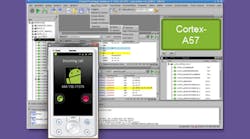Figure 1. Synopsys Virtualizer Development Kit (VDK) provides a virtual rendition of a hardware design allowing more detailed debugging as well as software access to the system before real hardware is available.
Synopsys Virtualizer Development Kit (VDK) provides designers with a way to quickly create and distribute virtual renditions of their final hardware. It helps shorten the design cycle providing programmers with a virtual platform before they can get their hands on the real stuff. It also provides advanced debugging and diagnostic tools that can address key issues such as power management (see Kit Generates Virtual Platforms With Power Debugging Support).
The latest version (Fig. 1) handles the range of Arm architectures including the new 64-bit, ARMv8 platforms that include the Arm Cortex-50 family (see Delivering 64-Bit Arm Platforms) as will as Arm's big.LITTLE configurations (see Little Core Shares Big Core Architecture)
Figure 1. Synopsys Virtualizer Development Kit (VDK) provides a virtual rendition of a hardware design allowing more detailed debugging as well as software access to the system before real hardware is available.
The latest support delivers access to the ARMv8 architecture a year before hardware will be available. Vendors can create VDK SoC designs for their developers to allow them to start software development now. This is important as programmers move from ARMv7 to ARMv8 platforms. Upward compatibility is always an issue of details and the virtual platforms allow programmers to work with the correct details now.
Synopsys' latest supports Linux out-of-the-box. It can handle single and multicore designs including the big.LITTLE mixed core architectures. Typically virtual designers can build on reference virtual prototypes and extend them by adding custom transaction-level models.
Developers actually have better access to the insides of a system with a virtual model that is not limited by the JTAG interface found on real hardware. Timing and power consumption details are readily available if programmers need this information. The advantages in development and debugging often lead developers into using the virtual platforms even after the real hardware is available.

